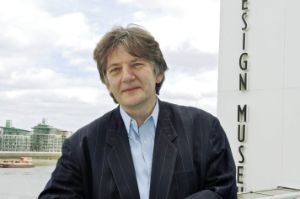
Lecture
Deyan Sudjic
The Uses of Memory in Architecture
Lecture by the architecture critic
Introduction: Henrik Adler

Deyan Sudjic © David Cowlard
Deyan Sudjic describes architecture in the context of power relations. In his books he closely examines the relation between politics, money and architecture. The background panorama for his analyses are the powerful and their edifices – and their architects, from Albert Speer, Le Corbusier, Boris Iofan, to Norman Foster und Rem Koolhaas who now work in China where they can put their high-flying plans into reality without facing any administrative impediments. Architects want to construct, and the powerful seek self-realisation in edifices. This is why also the buildings that were erected in Berlin since 1989 are now readable like pages of a history book. Writer Friedrich Dieckmann once wrote that in Germany it is common practice to punish edifices instead of people when a political era has gone wrong. Among other subjects, Sudjic analyses the reconstruction of Potsdamer Platz and the plans for redesigning the Schlossplatz, pointing out that the crucial questions still remain unanswered: How does Berlin deal with its historical legacy? What will the future definition of public space be?
Sudjic was born in 1952 to Serbian parents. He studied architecture and worked as editor and editor-in-chief for several important magazines. He works as an architecture critic for the renowned Guardian. In 2002, he was the director of the Venice Architecture Biennale. He also teaches as a professor, among others at the Vienna Akademie für angewandte Kunst and at Kingston University. He is director of the London Design Museum, the centre for important exhibitions of contemporary design and its history.
